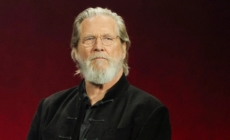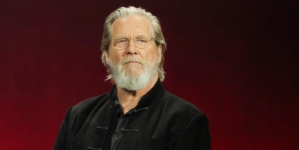-
Bucks vs Pacers: Damian Lillard Receives Major Injury Update - 17 mins ago
-
Former Trump Staff Members Liken His Actions to Those of ‘Royal Despot’ - 20 mins ago
-
How to Watch Aston Villa vs. Newcastle: Live Stream Premier League, TV Channel - 54 mins ago
-
Putin Declares One-Day Easter Truce in Ukraine War - about 1 hour ago
-
Jeff Bridges Wants to Return to Most Beloved Role - about 1 hour ago
-
Trump’s Tariff Threats Chill Italy’s Cheese Makers - 2 hours ago
-
Tomato Price Warning Issued Over Trump Tariffs - 2 hours ago
-
Can Trump Really Negotiate Peace in Ukraine, Russians Wonder - 3 hours ago
-
How to Watch Everton FC vs. Manchester City: Live Stream Premier League, TV Channel - 3 hours ago
-
Anti-Trump Protest Organizers Raise Alarm Over Possible ‘Military Force’ - 3 hours ago
‘Meritocracy’ Is the Right’s Smokescreen for White Mediocracy | Opinion | Opinion
The Trump administration is barely a week old and in just the span of a few days we have already witnessed a bevy of executive orders that intend to remove diversity, equity, and inclusion (DEI) efforts and any of their remnants from the federal government.
Beyond the public sector, we have also witnessed company after company announce that they are ending their efforts around investing in creating more diverse and inclusive workplaces. Much of this represents the culmination of a fight that the conservative right began years ago as part of its culture wars. The push back against DEI has steadily gained momentum, and eventually became an all-out assault with President Donald Trump’s series of orders seeming to serve as the final proverbial nail in the coffin.
With the ink from his signature barely dried, Trump made good on one of his biggest campaign promises and put an end to a narrative that had many believing DEI programs offered free passes and opportunity for the unqualified or otherwise undeserving. We have seen an all-out assault on everything DEI from the conservative right, complete with full-throated attacks on these and similar programs which, at their core, intended to create greater access for underrepresented groups. The resistance was borne of the same ilk that fueled arguments from staunch opponents of affirmative-action, and, not unlike that fight, presents a paradox that reveals not only dangerous ironies but a bigger issue around the myth of American exceptionalism.

MANDEL NGAN/AFP via Getty Images
As for the ironies, most of them can be plainly seen through the consideration and confirmation of Trump’s roster of cabinet picks. Newly-minted Secretary of Defense Pete Hegseth stands out as perhaps the clearest illustration, although he is hardly alone.
Hegseth is among a bevy of pics, including Robert F. Kennedy Jr. (Health and Human Services), Tulsi Gabbard (Director of National Intelligence), and Billy Long (Internal Revenue Service), who are uniquely unqualified for their suggested posts and, in many cases, come with a host of potential conflicts related directly to the jobs they want.
In Hegseth’s case, for example, the dogged focus on meritocracy throughout his public support campaign among senators and during his confirmation hearings amounted to little more than a ruse to distract from his lack of merit as one of the least qualified defense secretaries in history.
In the same breath that proponents of meritocracy cry foul at DEI-related programs, there is an unabashed desire to reward white mediocrity even when, as in Hegseth’s case, the potential candidate is nearly void of any relevant merit. Hegseth is woefully unqualified for the position and also lacks the moral fiber to lead our armed forces. However, that did not stop him from repeatedly touting the virtues of meritocracy during his public audition in the Senate, nor did it impede his confirmation.
The subtext that should be drawn here is Hegseth, and others who have so ardently leaned in the direction of meritocracy, are fine to eschew programs that are perceived to deny opportunities to the unqualified, so long as the unqualified aren’t them and others like them. The idea isn’t about taking away unfair advantages, it is quite the opposite. The unfair playing field must remain protected and its utility exists only for particular groups.
All these efforts stem from a desire to preserve the myth of American exceptionalism by making it easier to reward those who are not most deserving, but instead those who represent what we have been sold as the archetype of what is American: White, male, straight, and Christian. The idea is that this group represents the best, strongest, most capable, hardest working, and highly qualified group. It is a belief that is central to our patriotism and plays into our complacency because, regardless of where we land among our global competitors, it’s far easier to simply equate what we see as quintessentially American as being best than it is to do the actual work necessary to achieve that position.
DEI threatened that myth when it became a pathway for talented “others” to have access to opportunities and favorable outcomes in spaces where they had previously been denied. Instead of the issue being white mediocrity, the discussion was reframed to convince too many gullible—and in some cases bigoted—Americans that the reason that others seemed to be getting ahead was because they were using a new cheat code called DEI.
We have seen versions of this movie before. Not only with affirmative action, but also in the conversation around “welfare queens,” where social services programs were not just racialized but politicized to sell a narrative to the public that poor Blacks were scamming the system out of millions of taxpayer dollars through entitlement programs. That narrative was a factual farce because the demographic who benefited most then—and continues to benefit most now—from government aid programs is overwhelmingly white.
Similarly, the facts around DEI did not match the narrative. Despite the idea that some conservatives attempted to advance, Blacks comprised a paltry 4 percent of DEI positions in the workplace. However, in our current political dialogue, it appears the preference for relying on data and facts has taken a backseat to the need to protect the myth of American exceptionalism.
Where this iteration of the conversation differs from its predecessors, is in the way white nationalism has clashed with those who refuse to embrace the exceptionalism myth, even as both groups may share a collective disdain for what they falsely believe DEI represents. This was at the core of the H1-B visa squabble between MAGA-champion Steve Bannon and Elon Musk/Vivek Ramaswamy. Both Musk and Ramaswamy made comments suggesting that Americans may not, in fact, be as hard-working and exceptional as many would like to believe. That sort of talk was fine when discussing groups like Blacks and Latinos because those conservatives do not see them as American in the ways that they see someone like Hegseth, for example, However, when you include white Americans in that same unmotivated and entitled lot, there is a harsh need for rebuke.
Advancing the idea of meritocracy serves to protect the access for and ensure the progress of white male mediocracy. Trump’s first ascension to the presidency is a clear example of this. Without any experience in public office and a dubious record as a successful businessman, he bested a field of career electeds in a race that will be studied for generations.
One element that powered his rise, continues to sit at the core of what MAGA is all about: a belief that America is, should, and always will be number one, regardless of whether that position is earned, and that white America gets to say who the idea of who is authentically American does and does not include.
Still, regardless of the rhetoric or DEI’s removal, America will never achieve true exceptionalism without eschewing its penchant for rewarding white mediocrity.
Charles Coleman Jr. is a civil rights attorney and former Brooklyn, NY prosecutor. He is a MSNBC legal analyst and co-host of the MSNBC special Black Men in America: The Road to 2024. (X: CFColemanJr)
The views expressed in this article are the writer’s own.
Source link





















